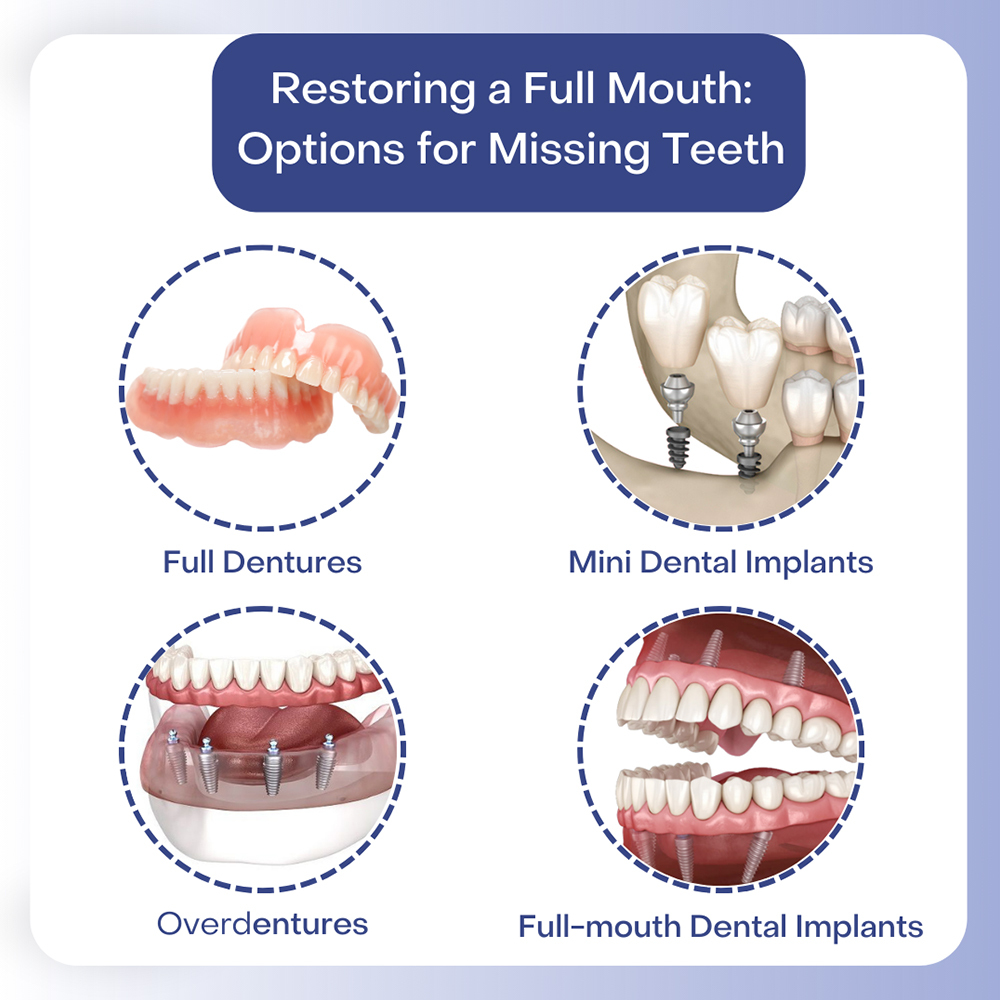The Main Principles Of Dental Sense
The Main Principles Of Dental Sense
Blog Article
Get This Report about Dental Sense
Table of ContentsNot known Details About Dental Sense The 5-Minute Rule for Dental SenseThe Ultimate Guide To Dental SenseDental Sense for Beginners
are clinical tools surgically implanted right into the jaw to restore a person's capacity to chew or their look. They supply support for artificial (phony) teeth, such as crowns, bridges, or dentures. When a tooth is lost because of injury or illness, an individual can experience problems such as fast bone loss, malfunctioning speech, or changes to chewing patterns that cause discomfort.Oral dental implant systems include an oral implant body and dental implant abutment and may also consist of a joint fixation screw. Cosmetic dentistry services. The oral implant body is surgically put in the jawbone in location of the tooth's origin. The dental implant joint is generally affixed to the implant body by the abutment fixation screw and extends via gum tissues right into the mouth to sustain the connected synthetic teeth
(https://issuu.com/dentalsense1)Framework of The Dental Implant System selecting oral implants, talk with your dental supplier regarding the possible advantages and dangers, and whether you are a prospect for the procedure. Points to take into consideration: Your overall health and wellness is an essential variable in figuring out whether you are a great prospect for dental implants, the length of time it will certainly take to heal, and the length of time the dental implant may remain in place.
Smoking cigarettes might impact the recovery procedure and decrease the long-lasting success of the implant. The healing process for the dental implant body may take several months or longer, throughout which time you commonly have a temporary abutment instead of the tooth. the dental implant procedure: Meticulously comply with the dental hygiene directions offered to you by your oral supplier.
Dental Sense Can Be Fun For Anyone
Implant failing can result in the requirement for another surgery to take care of or change the implant system. Restores the capacity to chew Brings back cosmetic appearance Assists keep the jawbone from reducing because of bone loss Preserves the wellness of the surrounding bone and gum tissues Assists maintain surrounding (neighboring) teeth stable Boosts top quality of life Damages to bordering natural teeth during dental implant placement Injury to the surrounding cells during surgery, such as sinus perforation Injury during surgical procedure (for instance, fracture of surrounding jawbone) Poor feature, such as really feeling like the teeth do not attack together typically An experience that the tooth hangs or turning in position arising from an abutment screw loosening Implant body failing (looseness of the implant body) due to systemic infection, which Resources may be most likely in clients with unchecked diabetes mellitus because of regional infection in bone and gums supporting the implant body due to postponed recovery, which may be much more likely in clients who smoke Problem cleaning up the gums around the implant, leading to bad oral hygiene Without treatment periodontal illness Post-surgical numbness as a result of nerve impingement or damages Always notify healthcare carriers and imaging technicians that you have oral implants prior to any kind of magnetic resonance imaging (MRI) or x-ray treatments.
FDA is not familiar with any kind of unfavorable events reported for MRI or x-ray procedures with oral implants. Dental implants systems are usually made from products that follow international agreement standards of the International Company for Standardization (ISO) or ASTM International. These standards have details of what makes a safe product.

An oral implant is a framework that replaces a missing out on tooth. With screw-like gadgets, the cosmetic surgeon inserts an implant into the jawbone, and it acts as a support for a synthetic tooth, called a crown.
The smart Trick of Dental Sense That Nobody is Talking About
Some people are not eligible for oral implant surgical treatment. It is for dental doctors to run on people with: severe illnessuncontrollable metabolic diseasebone or soft cells disease or infectionIf these issues are settled, an individual can have the surgical treatment. In, oral surgeons avoid operating on people with: If people with any of the above go through oral implant surgery, there is a greater danger of the dental implant failing.

Oral dental implant surgery is a personalized procedure. It's not the very same for every person. But the adhering to gives a general introduction of what you can expect your dental expert, oral specialist, periodontist or prosthodontist to do: Position the dental implant surgically. Offer you time to heal. Affix the post and last crown, bridge or denture.
Next off, your doctor will thoroughly position the dental implant right into your jaw. If your dental implant is near the front of your mouth, your dental professional will make a short-lived tooth for you to wear up until you recover.
The Greatest Guide To Dental Sense
Throughout the recovery stage, your jawbone ought to fuse to the dental implant. This process can take anywhere from 3 to 9 months.
As soon as your implant heals, your dental professional can connect the abutment (tiny port article) and your final remediation (crown, bridge or denture). This generally takes concerning one hour to complete and may call for a 2nd minor surgery. You should not feel any type of discomfort during your oral implant procedure due to the fact that your provider will utilize drug to numb your gum tissues.
Report this page